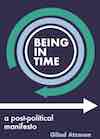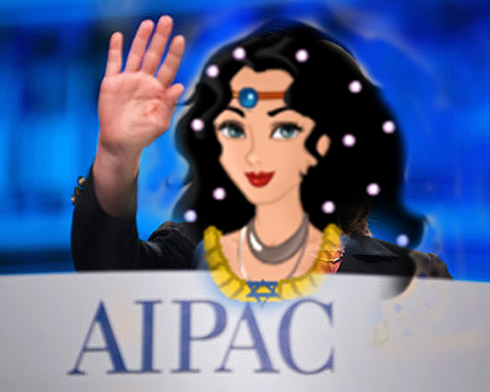By Gilad Atzmon
Book of Esther
The Book of Esther is a biblical story that is the basis for the celebration of Purim, probably the most joyous Jewish festival. The book tells the story of an attempted Judeocide but it also tells a story in which Jews manage to change their fate. In the book the Jews do manage to rescue themselves and even to mete revenge.
It is set in the third year of Ahasuerus, and the ruler is a king of Persia usually identified with Xerxes I. It is a story of a palace, conspiracy, an attempted Judeocide and a brave and beautiful Jewish queen (Esther) who manages to save the Jewish people at the very last minute.
In the story, King Ahasuerus is married to Vashti, whom he repudiates after she rejects his offer to ‘visit’ him during a feast. Esther was selected from the candidates to be Ahasuerus’s new wife. As the story progresses, Ahasuerus’s prime minister Haman plots to have the king kill all the Jews without knowing that Esther is actually Jewish. In the story, Esther together with her cousin Mordechai saves the day for their people. At the risk of endangering her own safety, Esther warns Ahasuerus of Haman’s murderous anti-Jewish plot. Haman and his sons are hanged on the fifty cubit gallows he had originally built for cousin Mordecai. As it happens, Mordecai takes Haman’s place, he becomes the prime minister. Ahasuerus’s edict decreeing the murder of the Jews cannot be rescinded, so he issues another edict allowing the Jews to take up arms and kill their enemies, which they do.
The moral of the story is rather clear. If Jews want to survive, they better find infiltrates into the corridors of power. With Esther, Mordechai and Purim in mind, AIPAC and the notion of ‘Jewish power’ looks like an embodiment of a deep Biblical and cultural ideology.
However, here is the interesting twist. Though the story is presented as an historic tale, the historical accuracy of the Book of Esther is largely disputed by most modern Bible Scholars. It is largely the lack of clear corroboration of any of the details of the story of the Book of Esther with what is known of Persian History from classical sources that led scholars to come to a conclusion that the story is mostly or even totally fictional.
In other words, though the moral is clear, the attempted genocide is fictional. Seemingly, the Book of Esther set its followers into a collective Pre-Traumatic Stress Disorder. It makes a fantasy of destruction into an ideology of survival. And indeed, some read the story as an allegory of quintessentially assimilated Jews who discover that they are targets of anti-Semitism, but are also in a position to save themselves and their fellow Jews.
The Book of Esther is there to form the exilic identity. It is there to invoke PRE traumatic stress, It sets the conditions that turn ‘Judeocide’ into a valid constant threat. But it also offers a survival strategy to encounter such an imaginary threat.
Interestingly enough, the Book of Esther (in the Hebrew version) is one of only two books of the Bible that do not directly mention God (the other is Song of Songs). In the Book of Esther it is the Jews who believe in themselves, in their own power, in their uniqueness, in their sophistication, in their ability to conspire, in their ability to take over kingdoms, in their ability to save themselves. The Book of Esther is all about empowerment and the Jews who believe in their powers.
From Purim to Birkenau
In an article named “A Purim Lesson: Lobbying Against Genocide, Then and Now“, Dr. Rafael Medoff shares with his readers what he regards as the lesson inherited to the Jews by the Book of Esther. If to be more precise, it is the art of lobbying which Esther and Mordechai are there to teach us. “The holiday of Purim” says Medoff, “celebrates the successful effort by prominent Jews in the capitol of ancient Persia to prevent genocide against the Jewish people.” But Medoff doesn’t stop just there. This specific exercise of what some call ‘Jewish power’ has been carried forward and performed by modern emancipated Jews: “What is not well known is that a comparable lobbying effort took place in modern times — in Washington, D.C., at the peak of the Holocaust.”
In the article Medoff explores the similarities between Esther’s lobbying in Persia and her modern brothers lobbying within the FDR’s administration at the pick of WW2. “The Esther in 1940s Washington was Henry Morgenthau Jr.” says Medoff, “a wealthy, assimilated Jew of German descent who (as his son later put it) was anxious to be regarded as ‘one hundred percent American.’ Downplaying his Jewishness, Morgenthau gradually rose from being FDR’s friend and adviser to his Treasury Secretary.”
Clearly, Medoff spotted a modern Mordechai as well, “a young Zionist emissary from Jerusalem, Peter Bergson (real name: Hillel Kook) who led a series of protest campaigns to bring about U.S. rescue of Jews from Hitler. The Bergson group’s newspaper ads and public rallies roused public awareness of the Holocaust — particularly when it organized over 400 rabbis to march to the front gate of the White House just before Yom Kippur in 1943.”
Medoff’s reading of the Book of Esther provides us with a glaring insight into the internal code of Jewish collective survival dynamics in which the assimilated (Esther) and the observant (Mordechai) are joining forces with clear Judeo centric interests in their minds.
According to Medoff the similarities are indeed shocking. “Mordechai’s pressure finally convinced Esther to go to the king; the pressure of Morgenthau’s aides finally convinced him to go to the president, armed with a stinging 18-page report that they titled ‘Report to the Secretary on the Acquiescence of This Government in the Murder of the Jews.'”
Dr. Medoff is rather ready to draw his historical conclusions. “Esther’s lobbying succeeded. Ahasuerus cancelled the genocide decree and executed Haman and his henchmen. Morgenthau’s lobbying also succeeded. A Bergson-initiated Congressional resolution calling for U.S. rescue action quickly passed the Senate Foreign Relations Committee — enabling Morgenthau to tell FDR that ‘you have either got to move very fast, or the Congress of the United States will do it for you.’ Ten months before election day, the last thing FDR wanted was an embarrassing public scandal over the refugee issue. Within days, Roosevelt did what the Congressional resolution sought — he issued an executive order creating the War Refugee Board, a U.S. government agency to rescue refugees from Hitler.”
It is clear beyond doubt that Medoff sees the Book of Esther as a general guideline for a healthy Jewish future. Medoff ends his paper saying: “the claim that nothing could be done to help Europe’s Jews had been demolished by Jews who shook off their fears and spoke up for their people — in ancient Persia and in modern Washington.” In other words, Jews can do and should do for themselves. This is indeed the moral of the Book of Esther as well as the Holocaust religion.
What Jews should do for themselves is indeed an open question. Different Jews have different ideas. The Neocon believes in dragging America and the West into an endless war against Islam. Emmanuel Levinas, on the contrary, believes that Jews should actually position themselves at the forefront of the struggle against oppression and injustice. Indeed, Jewish empowerment is just one answer among many. Yet, it is a very powerful not to say a dangerous one. It is especially dangerous when the American Jewish Committee (AJC) acts as a modern-day Mordechai and publicly engages in an extensive lobbying effort for a war against Iran and beyond.
When analysing the work and influence of AIPAC within American politics it is the Book of Esther that we should bear in mind. AIPAC is more than a mere political lobby. AIPAC is a modern-day Mordechai, the AJC and even JVP are modern-day Mordechais. Both AIPAC, AJC and JVP are inherently in line with the Hebrew Biblical school of thought. However, while the Mordechais are relatively easy to spot, the Esthers, those who act for Israel behind the scenes, are slightly more difficult to trace.
I believe that once we learn to look at Israeli lobbying in the parameters that are drawn by the Book of Esther/Holocaust-religion, we are then entitled to regard the enemies of Israel as the current Haman/Hitler figure. AIPAC and Kushner are Mordechais, Trump is obviously Ahasuerus, yet Esther can be almost anyone, from the last Neocon to Max Blumenthal and beyond.
If they want to burn it , you want to read it..

Being in Time – A Post Political Manifesto
* This is a segment from an 2007 Counterpunch’s article. I gave it a minor facelift updating some of the names and organisations.
The views expressed in this article are the sole responsibility of the author and do not necessarily reflect those of the Blog!

No comments:
Post a Comment